
Welcome to CivilGEO Knowledge Base
Welcome to CivilGEO Knowledge Base

Welcome to CivilGEO Knowledge Base
Welcome to CivilGEO Knowledge Base
Maps are composed of a series of map layers drawn in a particular order. A map layer defines how a GIS dataset is symbolized and labeled in the Map View. Examples of map layers include streams and lakes, terrain, roads, subbasins, building footprints, orthophoto imagery, and more.
In CivilGEO’s software, the user can use the External Map Layers command to add an additional map layer on the Map View using external map services.
Follow the steps below to use the External Map Layers command:

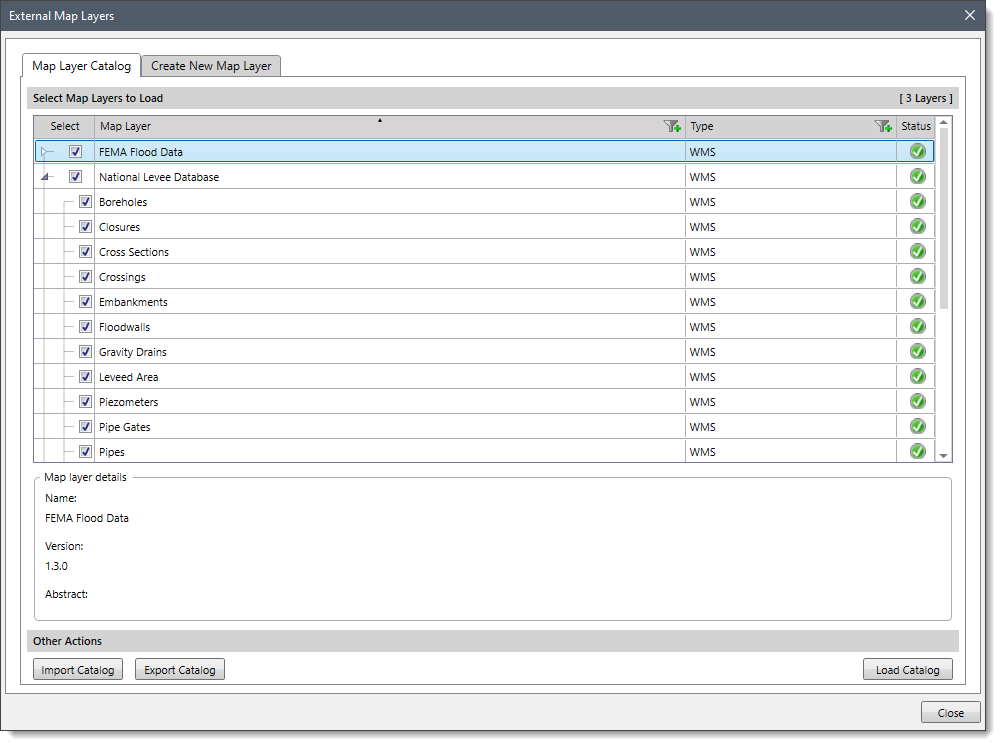
The following sections describe how to use the External Map Layers command and interact with the above dialog box.
The Map Layer Catalog panel allows the user to add external map layers on the Map View, import the map layer from the catalog file (collection of map files), or export the map layer into the catalog file.
To add additional map layers on the Map View, follow the steps below:
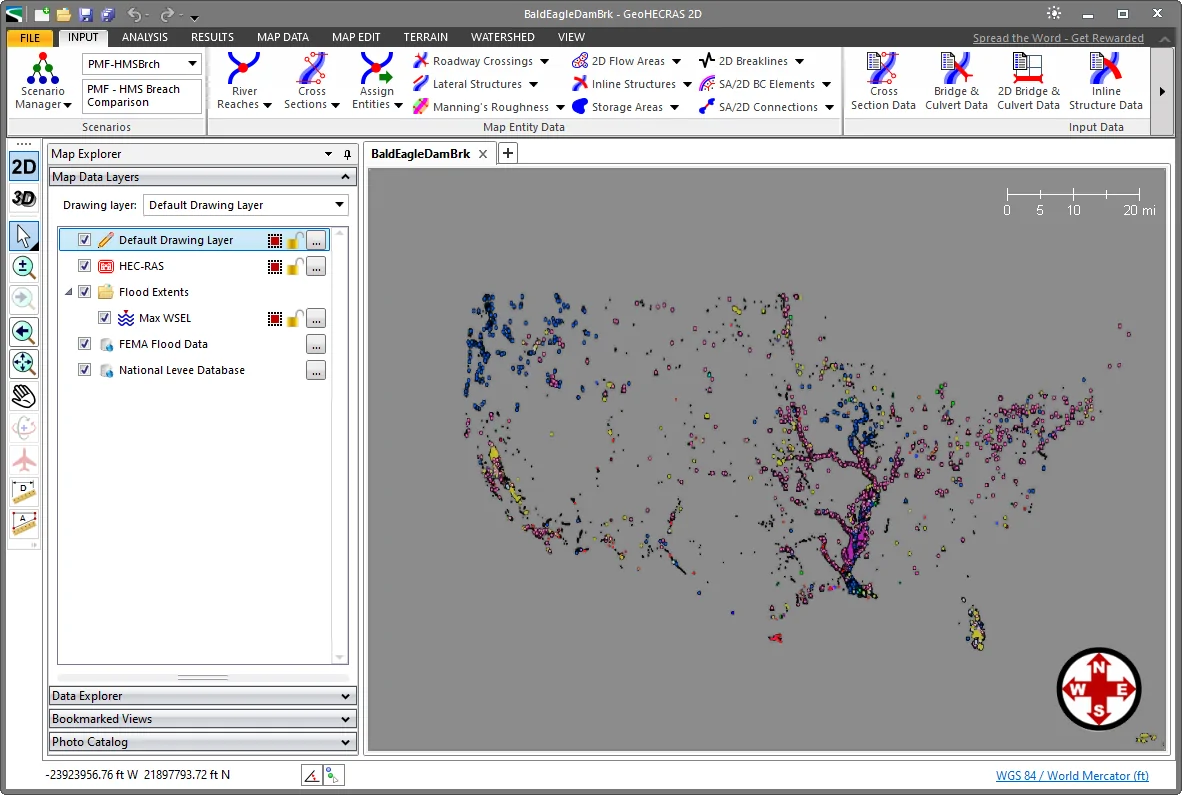
The user can click the [Import Catalog] button to import the map layers on the Map View.
![[Import Catalog] button](/wp-content/uploads/sites/25/2022/06/External-Map-Layers-Command-Image-4.png)
On clicking the [Import Catalog] button, the software will display the Import Catalog dialog box. The user can select the catalog file (it should have a file extension of .cat) and click the [Open] button.
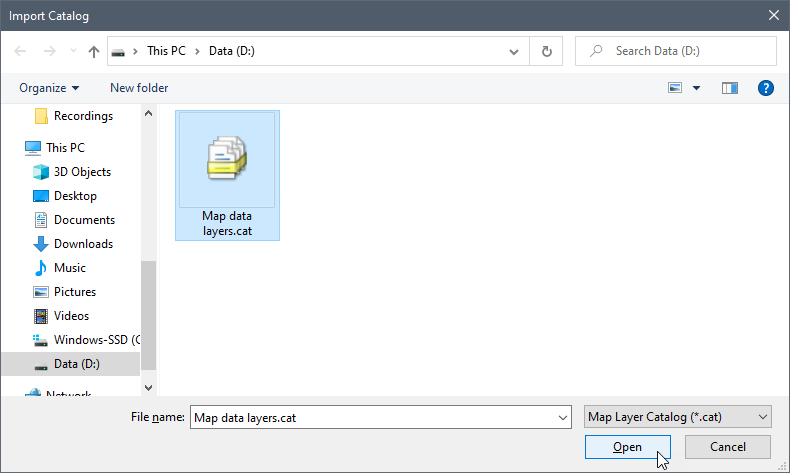
This will add the selected map layer catalog in the Select Map Layers to Load section of the Map Layer Catalog panel. The user can then select the sublayers of this newly added catalog and add them to the Map View.
The user can click the [Export Catalog] button to export a map layer in a catalog file.
![[Export Catalog] button](/wp-content/uploads/sites/25/2022/06/External-Map-Layers-Command-Image-6.png)
On clicking the [Export Catalog] button, the software will display the Export Catalog dialog box. The user can browse to the desired location to save the file, enter the file name, and then click the [Save] button to save map layers as a catalog file.
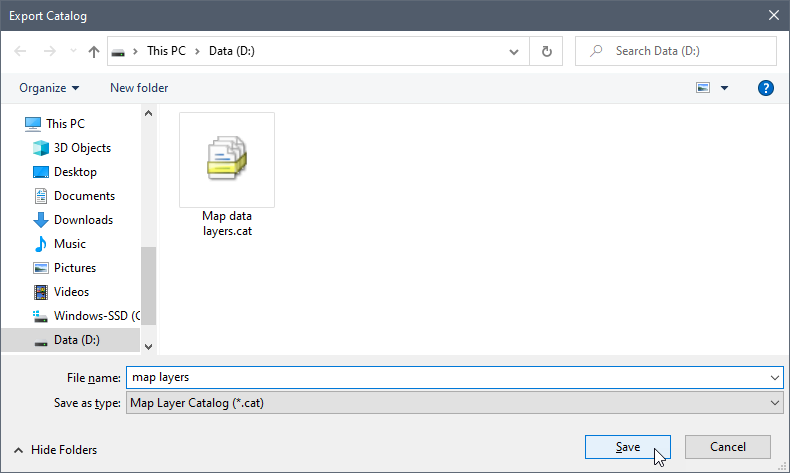
The Create New Map Layer tabbed panel allows the user to create a new map layer using the WMS (Web Map Service) services. A Web Map Service is the standard protocol for transferring map layers over the Internet.
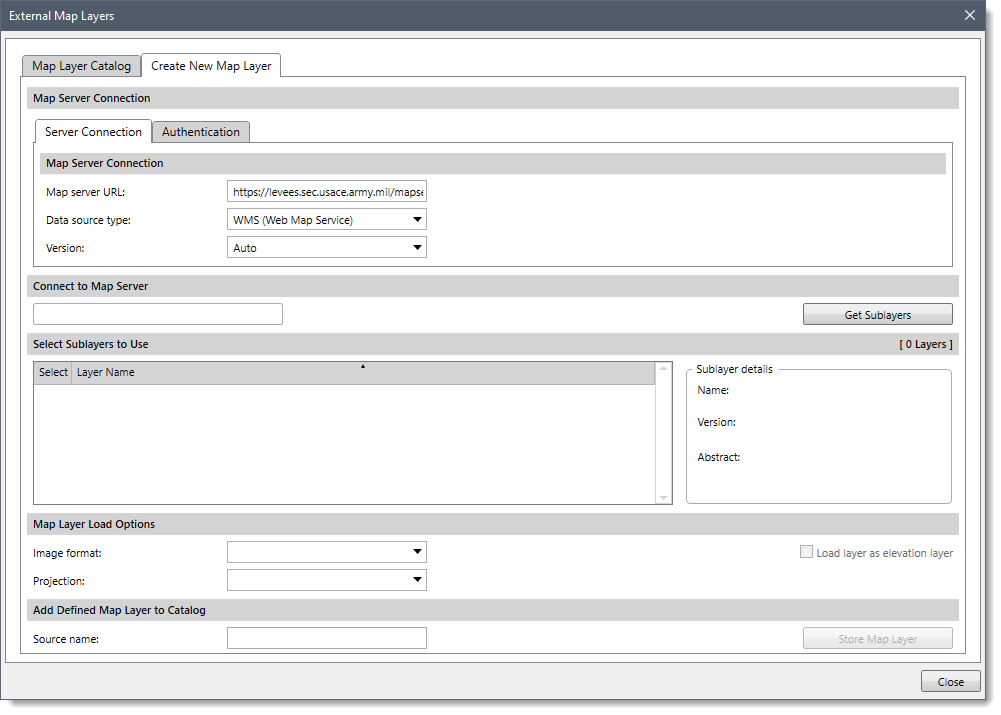
To create a new map layer, follow the steps below:
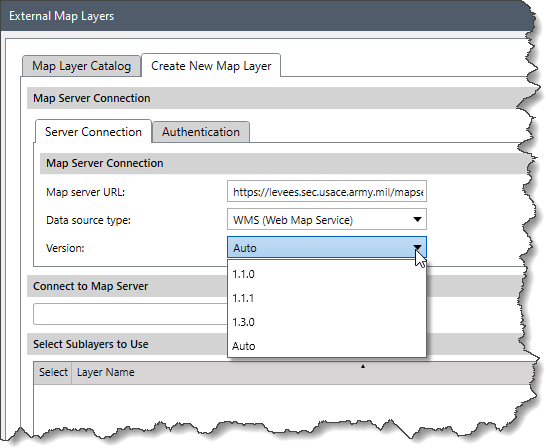 Sometimes the service requires authentication for establishing the connection. Follow the steps below to authenticate a connection:
Sometimes the service requires authentication for establishing the connection. Follow the steps below to authenticate a connection:
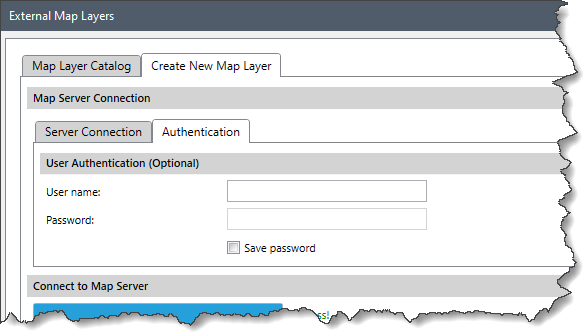
![[Get Sublayers] button](/wp-content/uploads/sites/25/2022/06/External-Map-Layers-Command-Image-11.png)

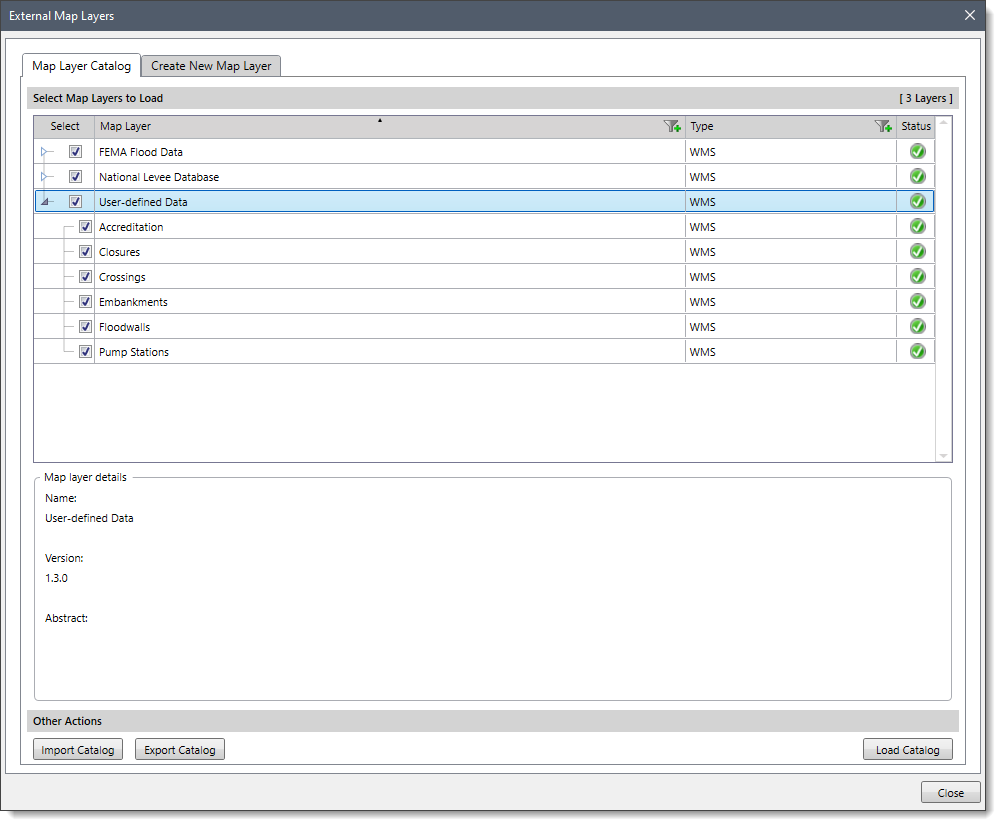
 1-800-301-02-955
1-800-301-02-955
 608-729-5100
608-729-5100
(US and Canada)
 [email protected]
[email protected]
 +1 608-729-5100
+1 608-729-5100
CivilGEO India
Graphix Tower, A-13 A
3rd Floor, Sector 62
Noida, Uttar Pradesh 201309
IndiaTel:
1-800-301-02-955 or
+91 022-3831-8601
CivilGEO United States
8383 Greenway Blvd
6th Floor
Middleton, WI 53562
USATel:
608-729-5100 or
800-488-4110
Copyright © CivilGEO, Inc. All rights reserved. The CivilGEO logo, “GeoHECHMS”, “GeoHECRAS”, and “Ready To Engineer” are registered trademarks of CivilGEO,
Inc. All other brands, company names, product names or trademarks belong to their respective holders.
We use cookies to give you the best online experience. By agreeing you accept the use of cookies in accordance with our cookie policy.
When you visit any web site, it may store or retrieve information on your browser, mostly in the form of cookies. Control your personal Cookie Services here.
The ZoomInfo WebSights snippet drops three cookies to track Unique Visits:
1. _pxhd - Related to the Perimeter X security layer (Perimeter X isused to prevent bot attacks).
2. _cfduid - Related to the CloudFlare security layer (CloudFlare is the Network Security protocol that ZoomInfo uses to orchestrate the rate limiting rules).
3. visitorId - This is how WebSights identifies recurring visitors








